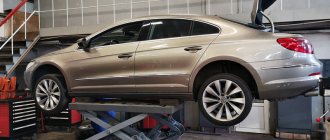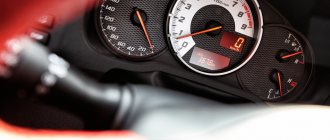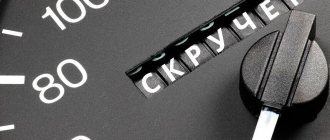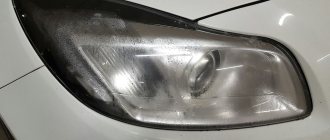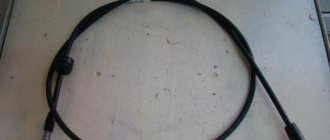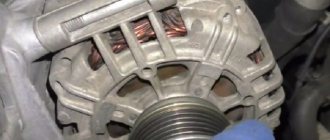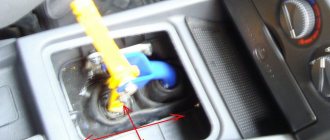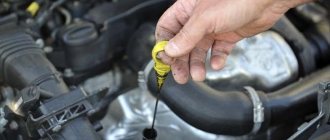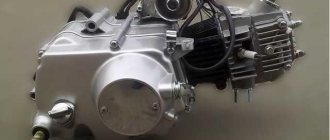Why does the odometer in a car lie?
Have you ever wondered about the reliability of your car's mileage displayed on the odometer? Did you know that in fact, most cars' odometer readings are not entirely accurate, just like the current speed reading on the speedometer? Moreover, all these inaccuracies are deliberately introduced by automakers during the car production process. Why is this necessary and how much the odometer lies in many cars, we propose to find out in our today's topic.
Today, many motorists use navigation systems in their cars, which help us navigate unfamiliar terrain, create optimal routes and avoid traffic jams. With the advent of GPS navigators, life for drivers has become easier. All modern navigation systems can determine vehicle speed. Have you noticed that the speed of your car according to the GPS/GLONASS navigator is almost always lower than that shown on the car’s speedometer?
Surely many of you think that this is an error in the navigation system. But in reality, satellite systems are much more accurate than the speedometer in a car. It is precisely because of the inaccuracy of speedometers in many cars that we see a difference in speed. But the difference in speed is also inaccurate since any satellite navigation systems also have acceptable errors. But the fact remains a fact. Almost all cars today are equipped with a speedometer that displays the incorrect speed of the vehicle. Moreover, this speed is always overestimated, and never underestimated.
That is, every automaker installs a speedometer that overestimates the speed readings. And this was done consciously, in accordance with various world standards. In our country, this standard is regulated by GOST R 41.39-99 (UNECE Rules No. 39).
According to this standard and technical requirements, speedometers cannot underestimate actual speed. Also, according to GOST R 41.39-99, the speedometer cannot increase the speed by more than 6 km/h (or more than 10%).
In practice and according to information from numerous auto forums on the Internet, it is safe to say that most automakers equip cars with speedometers that increase the speed on the speedometer by an average of 5-10%.
But can you tell me what the speedometer has to do with it? After all, today we are talking about the odometer. Yes, today we are discussing the topic of odometer error in a car. But the fact is that all odometers in modern cars are inextricably structurally linked with speedometer readings. Therefore, it is logical that if there is an upward error in the speedometer, then, of course, there is also an inaccuracy in the display of mileage on the odometer.
What does the mileage on the odometer turn out to be, for example, 100 thousand km. actually untruthful? Yes this is true. This is an inaccurate mileage, since it was calculated using a certain algorithm towards overestimation due to the fact that manufacturers, as a rule, overestimate the speedometer and odometer readings by up to 10 percent.
As a result, it is quite possible that if you see that your car has driven 100,000 km, then in reality the mileage is 95,000 - 98,000 km. It all depends on how much the speedometer exceeded the actual speed of the car during this mileage.
GLONASS monitoring systems
It is also worthwhile to figure out whether GLONASS navigation is a means of measuring speed. The monitoring system allows you to determine how far the car had to travel. There are several ways to obtain this information:
- Connection to stationary sensors. Mileage is determined based on information received from a device installed in the car. The measurements match the odometer data exactly. The error of GLONASS is practically zero.
- Determining the coordinates of the route traveled. The device sends information about the location of the vehicle at intervals of 10–30 seconds. The angle of movement is also taken into account.
- Calculation by Voyager. The readings are obtained using a GPS module. The terminal calculates the speed every second. The method is considered the most accurate.
GLONASS monitoring allows you to accurately determine the distance traveled, as well as the speed of movement. When using it, the result does not depend on the design features of the car. Also, the readings are not influenced by external factors.
GLONASS
Errors
The degree of error of GLONASS in meters, according to official information, is 2–5 m. The accuracy of the obtained coordinates is slightly lower than when using GPS. When connecting to 7 satellites, the error is 4–7 meters.
The performance is also affected by the terrain. For example, if the tilt angle is 11 degrees, the error reaches 1.5%. With a steep slope, measurement errors can be up to 6%. True, most trackers determine the height and make adjustments when calculating the distance traveled. The overall GLONASS error per 100 km will be a maximum of 3.5%.
Causes of data distortion
The data obtained is affected by:
- permissible odometer errors;
- quality and degree of wear of rubber;
- navigation system errors during measurement.
The number of kilometers traveled when using GLONASS will differ from the odometer readings. True, in navigators you can correct the data taking into account the errors of a stationary measuring device. When using this function, the user adjusts accurate calculations to less accurate ones, but the driver is not always sure of the correctness of the odometer readings. It is possible that the indicators are unreliable.
Why do speedometers and odometers inflate their readings?
Why are such technical requirements established for speedometers, which, in turn, affect the odometer readings? In fact, this is done for the purpose of road safety. For example, if the speedometer underestimated the speed indicators, then drivers would then believe that they were driving too slowly and would naturally, under certain conditions, increase their speed.
An underestimation of speed indicators would also affect the number of fines issued from photo and video cameras that monitor compliance with the speed limit. After all, you will agree that if the car’s speedometer showed its speed less than reality, then we would often receive fines for speeding. In this case, massive lawsuits against automakers from car owners would be guaranteed.
But this is not the only reason why automakers, on average, overestimate speedometer readings in the direction of increasing speed by 5-10%. Since the speedometer readings are directly related to the mileage on the odometer, it turns out that due to the speedometer error, the odometer incorrectly counts the car's mileage. As a result, depending on the operating conditions of the car (for example, on the average speed of the car) with a mileage of 100,000 km, the mileage error on the odometer can average 2000-5000 km. Do you know what advantage this error on the odometer gives to the manufacturer? Of course, this actually reduces the warranty obligations to the car owner.
We all know that when buying a new car, any automaker gives a factory warranty within the range of 100,000 - 150,000 km of the car's mileage. As a result, in the event of an error in the speedometer and odometer, it actually turns out that the factory warranty ends earlier than 100 thousand - 150 thousand km, since in reality the car has driven a little less.
Currently, most cars use an electronic odometer, which has replaced the classic mechanical odometer, which has been used for a long time in the global automotive industry. But despite the more accurate electronics, the principle of taking readings remains the same.
So, despite the electronic odometer, which displays the vehicle's mileage on LCD displays, mileage readings are taken from a sensor that counts wheel revolutions.
Accordingly, the error in the odometer reading may not only depend on the natural errors of the device, but also directly depends on the condition of the tires and the serviceability of the vehicle’s chassis.
For example, if non-standard wheels and tires are installed on a car, the error in the odometer reading can either increase or decrease significantly. For example, on various auto forums there are many examples where car owners, by changing the standard wheels to a different size, not only reduced the error in the speedometer reading, but also reduced the error in the odometer reading.
What does the error depend on?
The speedometer is a measuring instrument, and none of them can function without errors, which are divided into:
- instrumental, depending on the accuracy of the measuring device itself;
- methodological, which is influenced by the method of measuring a particular quantity (in this case, speed);
- additional, these include, for example, the use of tires not provided by the car manufacturer or wheels of different sizes.
Meter inaccuracy varies depending on the vehicle drive:
- for rear-wheel drive vehicles it is about 10%;
- for front-wheel drive vehicles it is slightly less – 5-7%.
Any manufacturer includes in the speedometer a certain error in measuring the speed of movement, expressed as a percentage. And this percentage will always remain the same, no matter how fast the car is moving. At the same time, the actual numbers that can be seen on the dashboard will differ depending on whether the car is traveling at a speed of 50 or 150 km/h.
On average, when driving at a speed of 200 km/h, the meter error will be 10%. When slowing down to 110 km/h, the difference can decrease to 5-10 km/h, and moving no faster than 60 km/h, you can observe minimal inaccuracy or not observe it at all.
The higher the vehicle speed, the greater the error between the meter readings and the actual speed, determined in absolute terms. At the same time, the percentage adjustment provided by the manufacturer will remain unchanged.
What else affects the accuracy of the odometer readings?
In fact, the accuracy of the mileage on the odometer depends on many factors. For example, even the height of the tire tread can affect the accuracy of the path traveled. The thing is that in modern cars, the mileage traveled, as we have already said, is calculated by the number of wheel revolutions.
You understand that the overall outer diameter of the wheel will depend on the height of the tire tread, which, naturally, will affect the number of wheel revolutions while driving on a certain section of the road. For example, the smaller the tire tread, the greater the number of full wheel revolutions will be recorded. And vice versa, the larger the tire tread, the lower the sensor will record wheel speeds on a certain segment of the vehicle’s path.
Odometer readings are also affected by tire pressure, as well as ambient temperature and even the duration of the journey. For example, if you are used to rarely checking the pressure in your wheels, and often drive on wheels that do not have enough pressure, then this leads to the fact that the wheels are heavily dented, which helps to reduce the outer diameter of the wheels.
As a result, the sensor that detects the number of full wheel rotations when the tires are flat will count more wheel rotations than at the normal pressure recommended by the automaker.
Even as we move, the pressure in the tires constantly changes. For example, due to changes in temperature outside. Also, during a long trip, the wheels heat up, which contributes to a change in tire pressure. As a result, all this greatly affects the odometer error.
Operation of the electronic speedometer
The main difference between an electronic device and an electromechanical one is the inclusion of an odometer with a digital display. There are no other fundamental differences. Such devices are used by popular car rental brands. They are installed not only on trucks and cars, but are often used in the production of various equipment.
The speed limit is determined with minimal error. The devices are as accurate and protected as possible. In addition, you definitely won’t be able to compile data about the path traveled by a car yourself; this can only be done with special equipment.
Attention! Despite all the advantages, there is an important drawback - it is difficult for the driver to get used to the unit with an electronic display, so when designing the engineers leave the classic arrow for ease of perception.
Assessing discrepancies
In the considered methods of measuring car mileage using odometers, it is obvious that various electromechanical devices have both their own and inherited (from data sources) errors. The fairly wide variability of products did not allow us to solve the main problem - mechanical error. Moreover, the significance of these errors is great, especially when considering the economic component of any business. The result of such errors is inflated costs for fuel and spare parts. The multicomponent nature of errors and their diversity leave no chance of taking control of the situation through direct action, so you will have to spend enormous effort on reconciling each unit of the vehicle fleet, and then frequently checking these readings.
But for the method of calculating vehicle kilometers using global positioning, there are simply no such difficulties. GPS/GLONASS systems use a completely different approach, which has both a small inherent error and no errors caused by the design features of the vehicle. Another significant advantage of using satellite technology is its security. While there are a huge number of ways to influence odometer readings, they are ineffective for the GPS/GLONASS monitoring system.
Also, if necessary, the monitoring system implements the ability to record mileage using several indicators at once, followed by comparison with the actual navigation data.
We hope that in our article we were able to fully answer the question of how to take into account the mileage of vehicles and which method will be an order of magnitude more accurate. If not, or if you have any other questions, need clarification or advice on taking measurements, please contact us using the feedback form on the website, email or phone number indicated in the contacts section. We will be happy to answer you and, if necessary, provide data on control measurements and share our wealth of experience in this field.
Basic speedometer malfunctions
List of main device malfunctions:
- destruction of gears (occurs if they are made of plastic);
- breaking off of the cable in the clutch section with the high-speed part;
- oxidation of contacts;
- damage to power cables;
- electronics malfunction.
Even an inexperienced car enthusiast can fix some of the breakdowns; the main thing is to have the necessary tools on hand: a 12-volt motor, a screwdriver, a flashlight and a jack.
Features of operating the speedometer
Car speedometers have one main drawback - a sufficient error in comparison with other devices. The error depends on a number of factors. Mechanically driven devices show the highest deviation from the true results; they must be checked regularly to maintain this standard. When the drive gear wears out, it increases and reaches 10% or more.
Electronic devices do not have this drawback, and therefore have increased accuracy, but not one of the devices excludes errors. Its likelihood increases when installing wheels of a smaller diameter on the car or when driving on a flat tire. The reason for the high error is the tactics of counting the speed of revolutions made by the secondary shaft of the drive wheel drive per unit of time. When it decreases or the pressure inside the tire decreases, the number of revolutions made per kilometer will be greater.
An additional error appears on front-wheel drive vehicles. This is due to changes in the speed of rotation of the front wheels at different angles of inclination. When turning to the right, the indicators increase, when turning to the left, they decrease.
You need to carefully choose a new speedometer to install in your car in case of complete breakdown of the old one. It is worth installing sensors recommended by the manufacturer, otherwise the devices will work with a big error. Modern devices are considered universal.
The driver must understand that failure of the speedometer is a reason for its emergency repair or replacement. Determining speed “by eye” is unacceptable; the error can be significant, then the risk of an accident and receiving a fine due to traffic violations will increase.
The price for repairing a speedometer in car services starts from 1000-1500 rubles.

